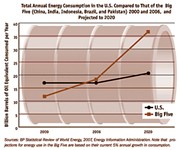Boxes With a View
UT Jumps on the Skybox Bandwagon
By Robert Bryce, Fri., Oct. 4, 1996
According to Doug Messer, a senior associate athletic director in the men's athletic department at UT, a 19-seat skybox at the stadium will cost $59,500 per year. A 12-seat skybox will lease for $33,750. "These prices have not been finalized," said Messer, who said the pricing structure is still being reviewed. However, it seems unlikely that the university will lower those prices very much.
Nearly three dozen universities in six conferences have built skyboxes in their football stadiums, and half a dozen more are planning to add them. The luxury accommodations are popular in the college game for the same reason they are at the pro level: money. "The ability to raise additional revenue is the main and only reason" for skyboxes, says Dave Heeke, an associate athletic director at the University of Oregon, which added 11 skyboxes to its stadium in 1991.
Texas A&M University, which has had 48 skyboxes at Kyle Field since 1980, was one of the first major colleges to build luxury accommodations for its boosters. "This is just another way to provide good seats to our alumni and corporations," says Wally Groff, A&M's athletic director, who says that revenue from the skyboxes is used to build and refurbish other venues. "We just approved a $3.6 million tennis center and the funds for that are coming from the suites." And Groff said A&M is planning to build 20 more skyboxes.
Skyboxes are not limited to football. Wake Forest University in Winston-Salem, North Carolina, and the University of Nevada--Las Vegas lease skyboxes to their men's basketball fans. Texas Tech University has skyboxes in its new baseball stadium.
Another member of the Big 12, the University of Nebraska, which has won two consecutive national championships in football, plans to add 40 skyboxes, at a minimum of $75,000 per year. Other Big 12 members that have built skyboxes in recent years include Kansas State, Iowa State, and the University of Oklahoma.
College skyboxes can cost as much or more than those in professional sports. According to figures from the Association of Luxury Suite Directors, the most expensive skybox at Lambeau Field, home of the National Football League's Green Bay Packers, leases for $25,000 per year. A top-of-the-line skybox at the Thomas & Mack Center, where the University of Nevada--Las Vegas plays basketball, costs $80,000.
College skyboxes offer an attractive tax break which may be fueling the skybox trend. The bulk of the lease payments an individual or corporation makes for a college skybox are tax-deductible because colleges are non-profit organizations. Skyboxes in the pro realm are not tax-deductible.
No conference has more skyboxes than the Southeast Conference. Two-thirds of the schools in the conference have built skyboxes, and the University of Alabama is planning to add 80 suites to its stadium. The University of Florida began the trend in the Southeast when it installed 28 skyboxes in 1983. The school leases those skyboxes for $33,000 per year, and it added 18 more in 1993. "We added more skyboxes because we knew we had a market," explains Sara Brazda of Gator Boosters, Inc., a group which raises money for the school's athletic programs. "And we have a huge waiting list."
The University of Iowa added 17 skyboxes to its football stadium last year. The boxes lease for between $10,000 and $18,000 per year. Mark Jennings, of the school's athletic department, says "the demand was coming from the donors, not from us." And he says the skyboxes have become an important marketing tool for the school. "It's not just good for athletics," he said. "It's good for the whole University of Iowa. If you can chat with friends of the university on a casual basis during a football game, you get your foot in the door for other things. I wish we had more boxes. I could probably sell 10 tomorrow."
Jeff Tsai, president of UT's Student Government, says skyboxes have not been a big topic of discussion on campus. And he believes that athletic departments need to turn to alternate sources for funding. However, he added, "If these skyboxes result in elimination of seats for students, or they result in academic hardship for any other academic department at the University, then I would be against them."
While UT and other schools are embracing skyboxes, the University of Michigan and the University of Notre Dame, two schools known for their powerful football programs, have decided against them. "We have had many people come to us and ask if they can build skyboxes for us," says Bruce Madej of the University of Michigan. "And there have been unbelievable offers on the table. But we are trying to make sure that this is a college atmosphere and not a professional atmosphere."
Although the decisions by Notre Dame and Michigan to resist the skybox trend
may be laudable, it can also be argued that they are among the few schools who
can afford not to have skyboxes. After all, Notre Dame has a
$40 million TV
contract with NBC. That's $40 million it doesn't have to share with anyone
else. And Michigan has a 102,501-seat stadium that produces huge amounts of
revenue.
And it is revenue, not winning records, that have become the most important thing in college football.
Bill Dorsey, executive director of the Cincinnati-based Association of Luxury Suite Directors, says no one should be surprised that skyboxes are playing a bigger role at the amateur level. "College sports are big business," says Mr. Dorsey, whose association claims 350 members. "In certain states, the colleges are bigger than the pro teams. For instance, the University of Nebraska takes the place of a pro team. It's what the whole state of Nebraska focuses on."
In Austin, a large city with no pro sports teams, UT has become the de facto pro franchise. The local daily reported recently that each UT home football game generates up to $4 million for the Austin economy. In the late 1980s, when the Texas A&M football program was threatened with the death penalty for transgressions that occurred during the Jackie Sherrill era, College Station went into a panic. The death penalty would have meant the end of A&M football, which pumps an estimated $25 million per year into the town's economy.
Messer, who tracks finances for the UT men's athletic department, says the UT football team generates about $10 million of the $16 million per year taken in by the men's athletic department. Yet, he said, football spends less than $4 million. The surplus revenues are used to fund other programs in the men's and women's athletic departments. When completed, the 54 new skyboxes should add some $2.1 million in gross revenue to the UT football program.
The economic importance of the skyboxes cannot be denied. But for Harry Cleaver, a UT economics professor, the decision to add skyboxes is indicative of the school's overemphasis on sports in general, and football in particular. "It's one more thing that puts the university's time and energy into an activity that has very little to do with its mission, which is education, research, knowledge, and understanding," he said.
Got something to say on the subject? Send a letter to the editor.








